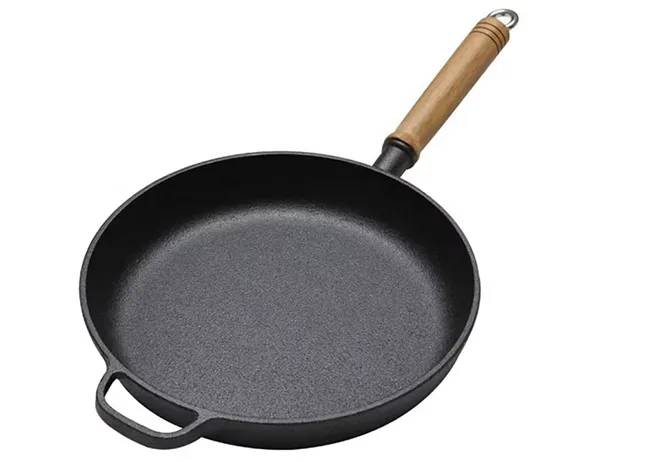
seasoning cast iron camp oven
The Art of Seasoning a Cast Iron Camp Oven
Cast iron cookware has long been cherished by outdoor enthusiasts and home cooks alike for its durability, heat retention, and versatility. Among the various cast iron cookware items, the cast iron camp oven stands out as a favorite for outdoor cooking, especially during camping trips or backyard gatherings. One of the key aspects to ensure its longevity and performance is properly seasoning it. In this article, we’ll explore the process of seasoning a cast iron camp oven, the benefits it provides, and tips for maintaining that perfect seasoning layer.
What is Seasoning?
Seasoning refers to the process of applying oil to the surface of cast iron cookware and heating it to create a natural, non-stick coating. This layer not only helps prevent food from sticking but also protects the metal from rust and corrosion. When done correctly, seasoning enhances the flavor of your cooking by imparting subtle, rich notes from previous meals.
The Seasoning Process
1. Cleaning the Oven Before seasoning your cast iron camp oven, it’s essential to start with a clean slate. If your oven is brand new, it may have a factory coating. Use warm, soapy water along with a stiff brush or scrub pad to remove any residues. If it’s used, make sure to scrub off any food particles or rust. Rinse and dry thoroughly.
2. Applying Oil Once clean, choose a suitable oil for seasoning. Flaxseed oil, vegetable oil, or shortening are popular choices due to their high smoke points. Using a paper towel or cloth, apply a thin layer of oil to the inside and outside surfaces of the oven, including the lid. Avoid over-oiling, as this can lead to a sticky surface.
3. Heating the Oven Preheat your oven to around 350°F (175°C). Place the camp oven upside down on the middle rack to allow any excess oil to drip off. This step is crucial to prevent pooling of the oil, which can cause unwanted stickiness. If your camp oven has legs or a lid, place foil underneath to catch any drips.
4. Cooling Down After one hour, turn off the heat and allow the camp oven to cool inside the oven. This gradual cooling helps set the seasoning layer properly.
5. Repeat For optimal results, repeat the seasoning process several times. Each layer will build upon the last, leading to a more resilient and effective non-stick surface.
seasoning cast iron camp oven

Benefits of Seasoning
Properly seasoning your cast iron camp oven offers numerous benefits. Firstly, it provides a natural non-stick surface that improves with each use. Secondly, a well-seasoned pot retains heat evenly, essential for slow-cooking and baking. Lastly, seasoning protects your oven from rust, ensuring it remains a cherished cooking tool for years to come.
Maintenance Tips
To maintain the seasoning on your cast iron camp oven, follow these simple guidelines
- Clean Gently After cooking, clean the oven with a soft brush or sponge and hot water. Avoid using soap, as it can strip the seasoning. For stuck-on food, use coarse salt as an abrasive.
- Dry Thoroughly Always dry your camp oven immediately after washing to prevent rust. You can place it over low heat on the stove for a few minutes to ensure it’s completely dry.
- Re-Season as Needed If you notice food starting to stick or your oven’s surface appears dull, it’s time to re-season it. A light application of oil after each use can also help maintain the seasoning.
Conclusion
Seasoning a cast iron camp oven is an essential skill for anyone who loves to cook outdoors. By taking the time to properly season your cookware, you not only enhance its performance but also enjoy delicious meals cooked over an open flame or campfire. With regular maintenance, your cast iron camp oven can become a treasured tool that serves you well for years, delivering perfectly baked bread, hearty stews, and delightful desserts under the stars.
-
Season Cast Iron Perfectly with GPT-4 Turbo TipsNewsAug.01,2025
-
High Quality Cast Iron Cookware - Baixiang County Zhongda MachineryNewsAug.01,2025
-
Premium Cast Iron Pan: Durable & Perfect HeatNewsAug.01,2025
-
High Quality Kitchen Durable Black Round Cast Iron Cookware Pancake Crepe Pan-Baixiang County Zhongda Machinery Manufacturing Co., Ltd.NewsAug.01,2025
-
Cast Iron Cookware - Baixiang County Zhongda Machinery | Nonstick, Heat ResistanceNewsAug.01,2025
-
High Quality Kitchen Durable Black Round Cast Iron Cookware - Baixiang County Zhongda Machinery | Non-Stick, Heat Retention, DurableNewsJul.31,2025


